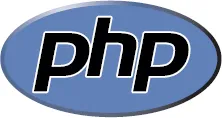
eBook - ePub
PHP in easy steps, 4th edition
Updated for PHP 8
Mike McGrath
This is a test
Buch teilen
- English
- ePUB (handyfreundlich)
- Über iOS und Android verfügbar
eBook - ePub
PHP in easy steps, 4th edition
Updated for PHP 8
Mike McGrath
Angaben zum Buch
Buchvorschau
Inhaltsverzeichnis
Quellenangaben
Über dieses Buch
PHP in easy steps, 4th edition demonstrates every aspect of the language you'll need to produce professional web programming results. Its examples provide clear syntax-highlighted code, which is freely downloadable, showing PHP language basics including variables, arrays, logic, looping, functions and classes.
- Install a free web server and the PHP interpreter to create an environment in which you can produce your own data-driven web pages.
- Write PHP server-side scripts; master PHP operators and control structures; process HTML form data; get cookies and session data; access Web Services APIs over HTTP... and much more!
PHP in easy steps, 4th edition is ideal for PHP newbies who want to quickly learn the fundamentals of server-side programming with PHP and create interactive web pages. Also, useful for PHP pros who want to grasp the new PHP 8 features and achieve optimum performance!
Updated for PHP 8.
Häufig gestellte Fragen
Wie kann ich mein Abo kündigen?
Gehe einfach zum Kontobereich in den Einstellungen und klicke auf „Abo kündigen“ – ganz einfach. Nachdem du gekündigt hast, bleibt deine Mitgliedschaft für den verbleibenden Abozeitraum, den du bereits bezahlt hast, aktiv. Mehr Informationen hier.
(Wie) Kann ich Bücher herunterladen?
Derzeit stehen all unsere auf Mobilgeräte reagierenden ePub-Bücher zum Download über die App zur Verfügung. Die meisten unserer PDFs stehen ebenfalls zum Download bereit; wir arbeiten daran, auch die übrigen PDFs zum Download anzubieten, bei denen dies aktuell noch nicht möglich ist. Weitere Informationen hier.
Welcher Unterschied besteht bei den Preisen zwischen den Aboplänen?
Mit beiden Aboplänen erhältst du vollen Zugang zur Bibliothek und allen Funktionen von Perlego. Die einzigen Unterschiede bestehen im Preis und dem Abozeitraum: Mit dem Jahresabo sparst du auf 12 Monate gerechnet im Vergleich zum Monatsabo rund 30 %.
Was ist Perlego?
Wir sind ein Online-Abodienst für Lehrbücher, bei dem du für weniger als den Preis eines einzelnen Buches pro Monat Zugang zu einer ganzen Online-Bibliothek erhältst. Mit über 1 Million Büchern zu über 1.000 verschiedenen Themen haben wir bestimmt alles, was du brauchst! Weitere Informationen hier.
Unterstützt Perlego Text-zu-Sprache?
Achte auf das Symbol zum Vorlesen in deinem nächsten Buch, um zu sehen, ob du es dir auch anhören kannst. Bei diesem Tool wird dir Text laut vorgelesen, wobei der Text beim Vorlesen auch grafisch hervorgehoben wird. Du kannst das Vorlesen jederzeit anhalten, beschleunigen und verlangsamen. Weitere Informationen hier.
Ist PHP in easy steps, 4th edition als Online-PDF/ePub verfügbar?
Ja, du hast Zugang zu PHP in easy steps, 4th edition von Mike McGrath im PDF- und/oder ePub-Format sowie zu anderen beliebten Büchern aus Informatique & Programmation en PHP. Aus unserem Katalog stehen dir über 1 Million Bücher zur Verfügung.
Information
Thema
InformatiqueThema
Programmation en PHP1
Getting started
Welcome to the exciting world of the interactive web with PHP. This chapter demonstrates how to create a dynamic development environment with a web server and the PHP engine.
Introducing PHP
Installing the Abyss server
Installing the PHP engine
Integrating Abyss and PHP
Embedding PHP script code
Scripting by the rules
Improving performance
Enabling JIT compilation
Summary
Introducing PHP
The most appealing modern websites provide a customized user experience by dynamically responding to some current conditions – user name, time of day, latest blog, shopping cart contents, etc. Many of these dynamic websites are created using PHP.

This is the official logo of the PHP project – the official online home of PHP can be found at php.net
What is PHP?
PHP is a widely-used general purpose scripting language that is especially suited for web development and can be embedded into HTML. It was created by programmer Rasmus Lerdorf, as a set of scripts to maintain his website that he released as “Personal Home Page Tools (PHP Tools) version 1.0” on June 8, 1995.
The tools were extended in the version 2 release of 1997, and the name changed to become a recursive acronym “PHP: Hypertext Preprocessor” in version 3 the following year. Performance, reliability and extensibility were improved in 2000 with the release of PHP4, which was powered by the Zend engine virtual machine.
Subsequently, PHP5 was released in 2004 powered by the new Zend II engine and produced as free software by the PHP group. A planned experimental version PHP6, which intended to introduce native Unicode support throughout PHP, was abandoned but PHP7 was released in 2015. PHP8 was released in 2020 and offers “Just In Time” (JIT) compilation for improved performance. Today, PHP is installed on over 20 million websites and 1 million web servers.
Why is PHP popular?
•PHP is extremely simple for a newcomer, but offers many advanced features for a professional programmer.
•PHP code is enclosed in special start and end processing tags that allow you to jump into and out of “PHP mode”, to implement instructions within an HTML document.
•PHP code is executed on the server (“server-side”), unlike JavaScript code that is executed in the browser (“client-side”). The client receives the results of running the script without knowing what the underlying code was. Recently, server-side has become known as “The Cloud”.

This is the “elePHPant” – the mascot of the PHP project, designed by Vincent Pontier.
Understanding The Cloud
Whenever a user asks to view a web page in their browser, it requests the...